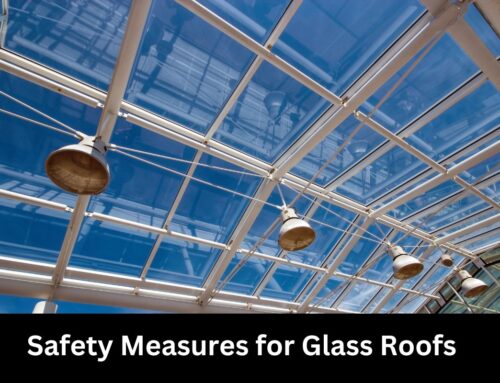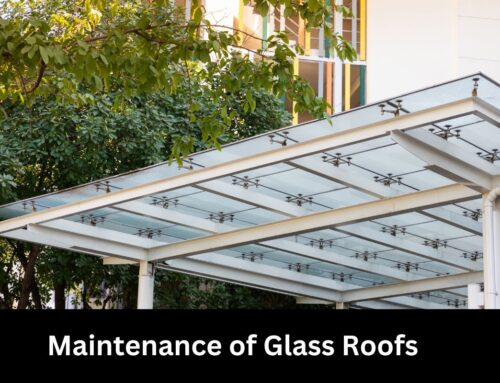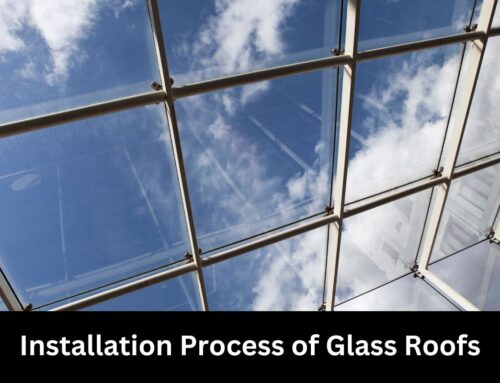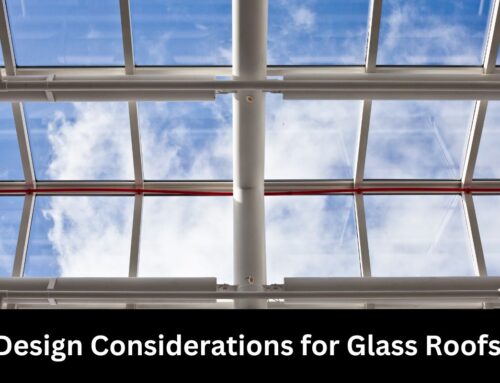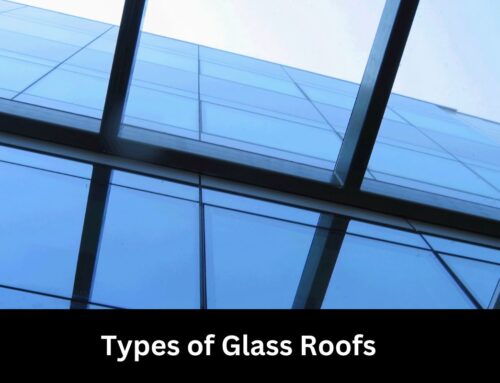Table of Contents
Imagine sitting under a glass roof, surrounded by the beauty of the outdoors while still being protected from the elements. Glass roofs are a stunning addition to any home or building, providing an abundance of natural light and a unique aesthetic appeal. But have you ever wondered about the materials that make these structures possible?
In this article, we will explore the materials used in glass roofs, ensuring that you have a comprehensive understanding of the components that contribute to their safety and functionality. From the glass panels themselves to the frame materials, insulation, sealants, and adhesives, we will delve into the intricate details that make a glass roof not only visually appealing but also structurally sound.
Additionally, we will discuss the additional features and accessories that can enhance the performance and safety of your glass roof. So, let’s embark on this informative journey and uncover the world of materials used in glass roofs.
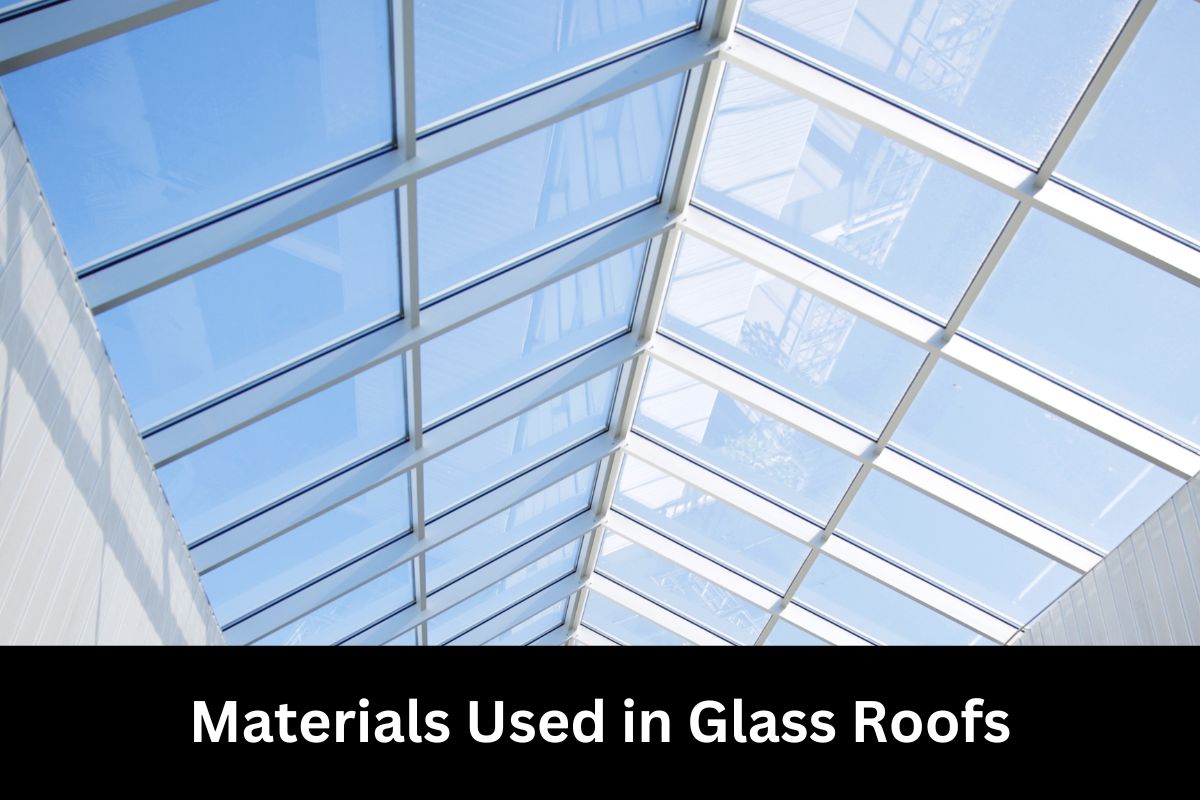
Key Takeaways
- Glass roofs can be made from tempered or laminated glass, which are both strong and resistant to extreme weather conditions.
- The frame materials for glass roofs include aluminum, steel, and wood, each with its own advantages and disadvantages.
- Thermal insulation in glass roofs can be achieved through foam insulation or double glazing.
- Sealants and adhesives such as silicone, polyurethane, and butyl are used to ensure the durability and weather resistance of glass roofs.
Glass Panels
Glass panels are a key component of modern glass roofs, providing a sleek and transparent covering that allows natural light to flood in. These panels are typically made from tempered or laminated glass, which ensures durability and safety.
Tempered glass is heated and then rapidly cooled, making it four to five times stronger than regular glass. It’s also designed to break into small, dull pieces, reducing the risk of injury in case of breakage.
On the other hand, laminated glass consists of two or more glass layers with an interlayer of polyvinyl butyral (PVB) sandwiched in between. This interlayer acts as a bonding agent, holding the glass together even when shattered, providing additional safety.
Both tempered and laminated glass panels are highly resistant to extreme weather conditions, such as hail and strong winds, making them ideal for glass roofs.
Moving on to frame materials, they play a crucial role in supporting and securing the glass panels.
Frame Materials
Choose a frame material that complements your style and adds a touch of elegance to your roof. When it comes to glass roofs, the frame material plays a crucial role in providing structural support and enhancing the overall aesthetic appeal. There are several options available, each with its own set of advantages and considerations.
| Frame Material | Pros | Cons |
|---|---|---|
| Aluminum | Lightweight, durable, corrosion-resistant | Poor thermal insulation, can be expensive |
| Steel | Strong, long-lasting, can support heavy loads | Prone to rust, requires regular maintenance |
| Wood | Natural, aesthetically pleasing, good insulation | Vulnerable to rot, may require frequent painting |
Aluminum frames are popular for their lightweight nature and resistance to corrosion, making them a great choice for areas with high humidity or coastal regions. However, they may not provide the best thermal insulation and can be more expensive. Steel frames offer exceptional strength and can support heavy loads, but they require regular maintenance to prevent rust. Wood frames, on the other hand, offer a natural and beautiful look while providing good insulation. However, they require more maintenance due to the risk of rot and may need frequent painting.
When selecting a frame material for your glass roof, consider your style preferences and the specific requirements of your location. Now, let’s move on to the next section and explore the insulation materials that can keep your glass roof comfortable and energy-efficient.
Insulation Materials
When considering a glass roof, it’s essential to explore the various insulation options available to ensure comfort and energy efficiency. Proper insulation is crucial in maintaining a comfortable temperature inside your space while also reducing energy consumption. There are two primary types of insulation materials commonly used in glass roofs: foam insulation and double glazing.
Foam insulation is often used in glass roofs because of its excellent thermal properties. It helps to prevent heat transfer between the interior and exterior of the building, keeping the space cool in the summer and warm in the winter. Foam insulation is typically made of polyurethane or polystyrene and can be sprayed or installed in rigid panels.
Double glazing is another insulation method that involves the use of two glass panes with an air or gas-filled space in between. The trapped air acts as an insulator, preventing heat transfer through the glass. Double glazing not only provides excellent thermal insulation but also reduces noise transmission, making it a popular choice for glass roofs.
Choosing the right insulation material for your glass roof is crucial to ensure optimal comfort and energy efficiency. In the next section, we will explore the importance of sealants and adhesives in maintaining the structural integrity of glass roofs without compromising safety.
Sealants and Adhesives
To maintain the structural integrity of your glass roof and ensure its safety, it’s important to use proper sealants and adhesives that securely bond the components together. Sealants and adhesives play a crucial role in preventing leaks, reducing noise transmission, and providing thermal insulation. When choosing sealants and adhesives for your glass roof, it is essential to consider their compatibility with the materials used and their ability to withstand extreme weather conditions.
To guide you in selecting the right sealants and adhesives, here is a table showcasing some commonly used options:
| Sealant/Adhesive | Description | Benefits |
|---|---|---|
| Silicone | Highly flexible and durable, resistant to UV rays and extreme temperatures | Provides excellent weatherproofing and long-lasting adhesion |
| Polyurethane | Offers superior bonding strength, elasticity, and resistance to water and chemicals | Ideal for sealing joints and bonding glass panels |
| Butyl | Viscoelastic material that remains flexible over time | Effective in sealing against air and water infiltration |
By using these high-quality sealants and adhesives, you can ensure the longevity and safety of your glass roof. Additionally, the proper application of these materials will help maintain a comfortable and energy-efficient environment within your space.
As you consider the importance of sealants and adhesives, it’s also essential to explore additional features and accessories that can enhance the functionality and aesthetics of your glass roof.
Additional Features and Accessories
Enhance the functionality and aesthetics of your glass roof with these additional features and accessories. When it comes to glass roofs, there are several options available to ensure safety and improve the overall experience.
One important feature to consider is the inclusion of a shade system. This can provide protection from the sun’s UV rays, reducing heat and glare inside your space. Additionally, a shade system can enhance privacy and allow for better control over the amount of light entering the room.
Another useful accessory is a rain sensor. This technology detects rainfall and automatically closes the glass roof, preventing water from entering your space. This feature is especially important in areas prone to heavy rainfall or sudden weather changes.
To further enhance safety, consider adding a ventilation system. This will help to regulate temperature and prevent condensation buildup, creating a more comfortable and enjoyable environment.
Lastly, don’t forget about safety measures such as safety glass, which is designed to minimize the risk of injury by shattering into small, less harmful fragments. By incorporating these additional features and accessories, you can not only improve the functionality of your glass roof but also ensure the safety and comfort of those underneath it.
Frequently Asked Questions on Materials Used in Glass Roofs
How much weight can a glass roof support?
A glass roof can support an impressive amount of weight, with the average capacity ranging from 8,000 to 12,000 pounds per square foot. This ensures your safety and peace of mind, even during heavy snowfall or other extreme weather conditions.
What is the average lifespan of a glass roof?
The average lifespan of a glass roof is around 20 to 30 years. However, this can vary depending on factors such as maintenance, weather conditions, and the quality of the glass and installation. Regular inspections and proper care can help extend its lifespan.
Are glass roofs energy-efficient?
Glass roofs can be energy-efficient when designed properly. Double or triple glazing, low-emissivity coatings, and insulated frames help to minimize heat loss and maximize insulation, making them a safe and efficient option for your home.
Can glass roofs be tinted to reduce glare and UV rays?
Yes, glass roofs can be tinted to reduce glare and UV rays. Tinting not only provides a visual shield, but also acts as a protective layer, ensuring your safety and minimizing the harmful effects of the sun.
Can glass roofs be designed to withstand extreme weather conditions such as hail or heavy snowfall?
Yes, glass roofs can be designed to withstand extreme weather conditions such as hail or heavy snowfall. Specialized glass materials and reinforced structures are used to ensure safety and durability in these situations.
Conclusion
So, there you have it – a comprehensive overview of the materials used in glass roofs. By delving into the world of glass panels, frame materials, insulation materials, sealants, and adhesives, as well as additional features and accessories, we’ve unraveled the secrets behind these magnificent structures.
Armed with this knowledge, you can confidently embark on your own glass roof project, knowing exactly what materials to choose for maximum durability and aesthetics. So go ahead, let your imagination soar, and create a stunning glass roof that’ll elevate your space to new heights.
Related Articles

